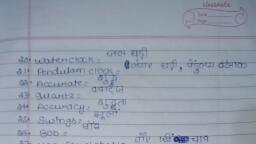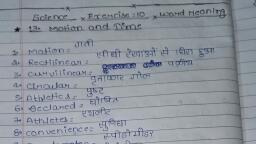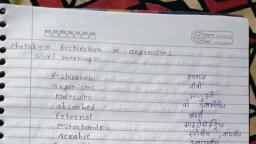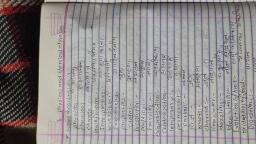Question 1 :
The thermo-emf of a copper-constant couple is $40\muV$ per degree. The smallest temperature difference that can be detected with this couple and galvanometer of $100\Omega$ resistance capableof measuring the minimum current of $1\mu A$ is
Question 2 :
We have n resistors each of resistance R. The ratio of the combination for maximum and minimum values is
Question 3 :
The smallest resistance that can be obtained by the combination of  $n$ resistors, each of resistance  $R$ is:
Question 4 :
The current in a wire is doubled keeping temperature constant. Which of the following statements is/are wrong?
Question 5 :
Two resistors are connected a) in series b) in parallel.<br>The equivalent resistance in two cases are $9\ ohm$ and $2\ ohm$ respectively. Then the resistance of the component resistors are.
Question 7 :
The heating element in an electric iron is made up of :
Question 9 :
The temperature of a conductor is increased. The product of resistivity and conductivity:<br/>
Question 10 :
For a heater rated at4.4 kW; 220 V . Calculate the energy consumed by the heater in 4 hours?
Question 11 :
A constant voltage is applied between the two ends of uniform metallic wire, some heat is developed in it. If both the length and the radius of the wire halved, the heat developed in the same duration will become
Question 12 :
When the electric resistance are connected in parallel, which one of the following quantities is not affected ?
Question 13 :
An electric kettle is rated as $2.5\ kW, \ 250\ V$. Find the cost running the kettle for two hours at $60\ \text{paisa}/\text{unit}$.
Question 15 :
The smallest resistance that can be obtained by combining 10 resistors each of resistance $10 \Omega$is
Question 16 :
Three resistors each having same resistance are connected in parallel. Their equivalent resistance is$\displaystyle 5\Omega$. If they are connected in series, their equivalent resistance is.
Question 17 :
The emf of the battery in a thermocouple is doubled. The rate of heat generation at one of the junctions will 
Question 19 :
Which is the equivalent resistance when resistors $3 \Omega$ and $6 \Omega$ are in parallel?<br>
Question 23 :
The resistance of a hot tungsten filament is about $10$ times the cold resistance. What will be the resistance of $100\ W,\ $ <br> $200\ V$ lamp when not in use?
Question 25 :
Constantan wire is used for making standard resistance, because it has
Question 26 :
From below which are the applications of heating effect of electric current?<br>
Question 27 :
As the temperature of a conductor increases, its resistivity and conductivity change. The ratio of resistivity to conductivity<br>
Question 28 :
Why are bulbs filled with chemically inactive Nitrogen or Argon gas?<br>
Question 29 :
Mark the correctreason why tungsten is used for making filament of electric lamp.
Question 30 :
In our houses all electrical devices operate on 220 V. It implies that
Question 32 :
Two wires of the same dimensions but resistivities $\rho_{1}$ and $\rho_{2}$ are connected in series. The equivalent resistivity of the combination is
Question 33 :
Four bulbs, each of rating $(100 W, 220 V)$ and connected in parallel across a voltage supply of $220 V,$ are operated for five hours daily. If all the bulbs are replaced by LEDs of rating $(8 W, 220 V)$, how many units of electrical energy will be saved every month ($30$ days)? 
Question 34 :
Copper and silicon is cooled from 300 K to 60 K, the specific resistance :-
Question 35 :
Which of the following is used for the formation of thermistor?
Question 36 :
An electric heater draws a current of $10 A$ and its element has a resistance $20 \Omega$. If the heater is switched on for 6 minutes, calculate energy released in Joules.
Question 37 :
Which of the following quantities do not change when an ohmic resistor connected to a battery is heated due to the current?
Question 38 :
The energy consumed in 1 kilowatt electric heater in 30 seconds will be
Question 39 :
In how many parts (equal) a wire of $100\Omega$ be cut sothat a resistance of $1\Omega$is obtained by connectingthem inparallel?
Question 40 :
The amount of work done in joules, when one unit electric charge moves from one point to another point in an electric circuit is called: 




























